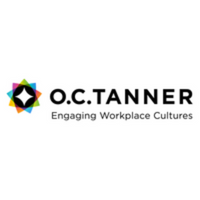The link between strong culture and mental wellbeing and what this means for reward leaders

Our 2021 Global Culture Report found that the impact of Covid-19 increased burnout by up to 81% in ‘non-thriving’ cultures, and yet this was just 13% in ‘thriving’ cultures. It is clear that an organisations’ culture directly impacts mental health, from mild symptoms of burnout through to severe symptoms, and by focusing on creating a positive organisational culture, mental wellbeing will improve.
So what does this mean for rewards and benefits directors? It means they must concentrate on reward offerings that contribute to a thriving culture.
What does a thriving culture look like?
A thriving culture has purpose, a strong moral compass, employee opportunities, an ‘air of success’, and a focus on appreciation and wellbeing.
From the employees’ point of view, this means the organisation has a clear and meaningful purpose that resonates and is well-articulated, so that everyone understands the company’s ‘raison d’etre’ and how they fit into the ‘bigger picture’. And the company’s values are clear and are lived and breathed every day, being incorporated into recruitment strategies, meeting agendas and recognition moments, for example.
There are a range of opportunities for people that aren’t just centred around promotions, and everyone feels as though they are part of a “winning team” on a daily basis.
Plus wellbeing and appreciation are key so long working hours are discouraged, people are permitted to ignore work calls and emails when away from the office, and authentic and sincere recognition takes place every single day.
Underlining all this, there’s a leadership team comprised of ‘modern leaders’ who are compassionate, understanding and collaborative, working hard to connect their teams to purpose, accomplishment and each other.
Organisations that achieve all of this (or certainly the majority of this), have more engaged and motivated employees, lower turnover and fewer cases of burnout. In fact, when employees feel connected to company purpose, accomplishment and each other, the company is ten times more likely to have a thriving culture.
Rewards with meaning
To contribute to a thriving culture, reward and benefits directors must focus on rewards with meaning and purpose that enhance the employee experience, such as time-off and shared family experiences.
A key investment must be a recognition programme so that employees feel appreciated in a sincere and timely way. Senior leaders need to pay particular attention to encouraging effort, rewarding results and celebrating careers. Ongoing effort should be recognised weekly or even daily, results should be rewarded each time an employee accomplishes great work and loyalty should be celebrated on employee work anniversaries.
To realise the full impact of recognition, workplace culture needs to center on employees recognising the efforts of their colleagues, celebrating with each other when great work is accomplished and reveling together in an individual’s loyalty to their company and team. In other words, recognition cannot be a ‘set it up and forget it’ type of initiative, but needs to be integrated into everyday culture.
Having the right supporting technology is key here, especially as research reveals that 86% of employees believe their recognition programmes are stale, outdated or are being used as disguised compensation. As organisations with truly integrated recognition are 44% less likely to have employees suffering with burnout and are four times more likely to have highly engaged employees, it should be at the top of every reward director’s list.
It’s time to stop papering over the cracks
It’s time to take a fresh look at workplace culture to determine which initiatives are truly enhancing workplace culture and which are just papering over the cracks. By focusing on rewards and benefits that actively contribute to a thriving culture, not only will employees be more engaged and motivated, but mental wellbeing will be improved with fewer instances of burnout.
Download O.C. Tanner’s 2021 Global Culture Report.
The author is Robert Ordever, MD of workplace culture expert, O.C. Tanner Europe.
This article is provided by O.C. Tanner Europe.
For more on culture and recognition, register for our webinar: Employee recognition plans are changing: innovative ideas and key checks to ensure your scheme engages the workforce of 2021 on 24 June at 1pm, with strategic partners O.C. Tanner.
In partnership with O. C. Tanner
Giving teams the integrated tools they need when, where and how they need them.







